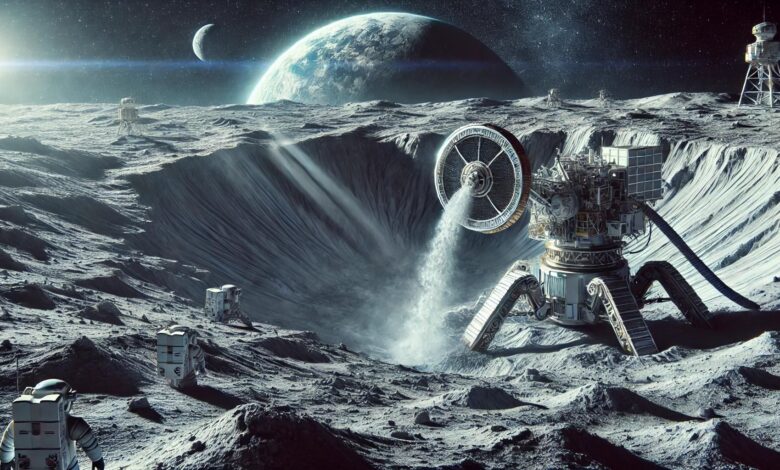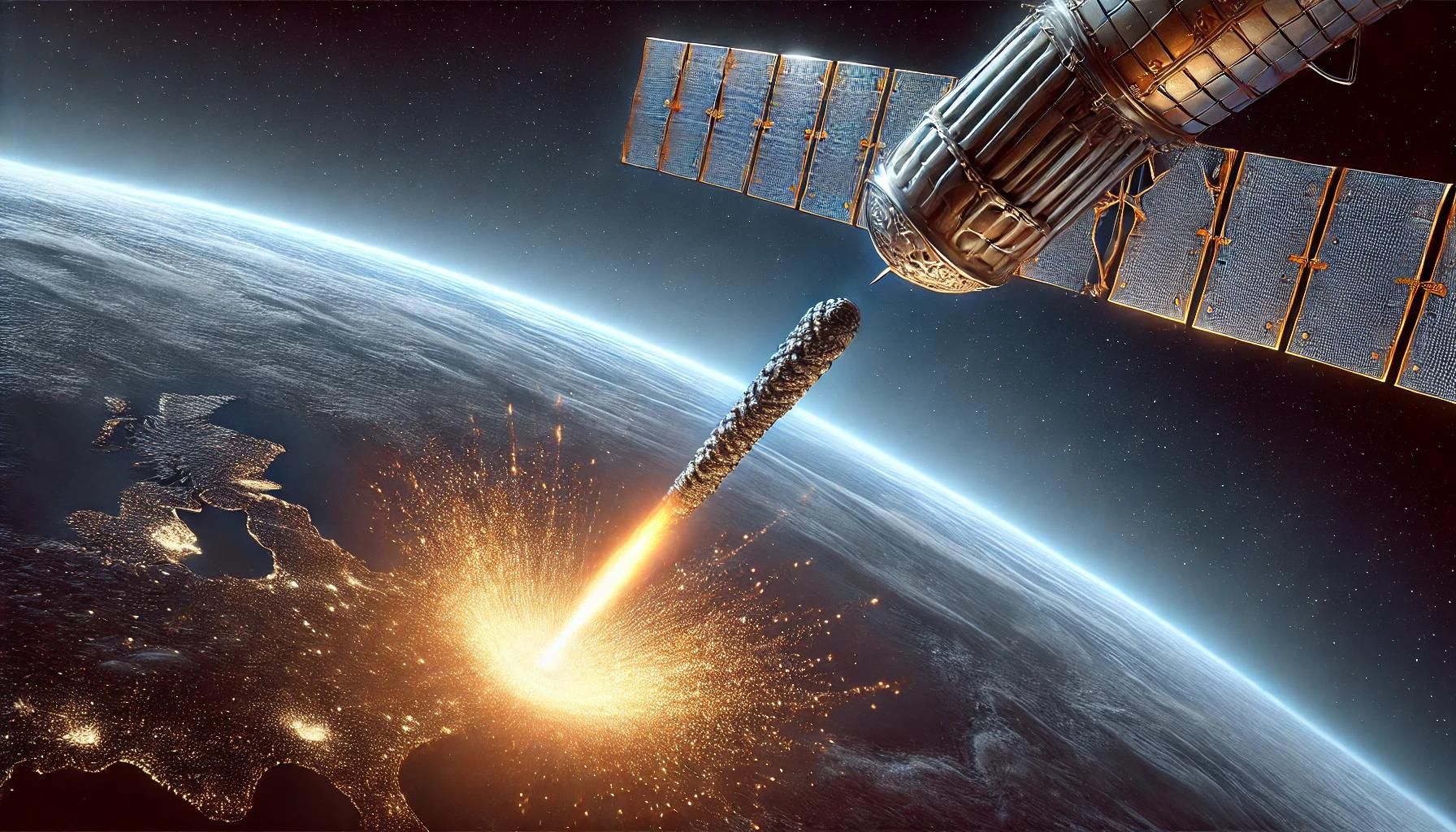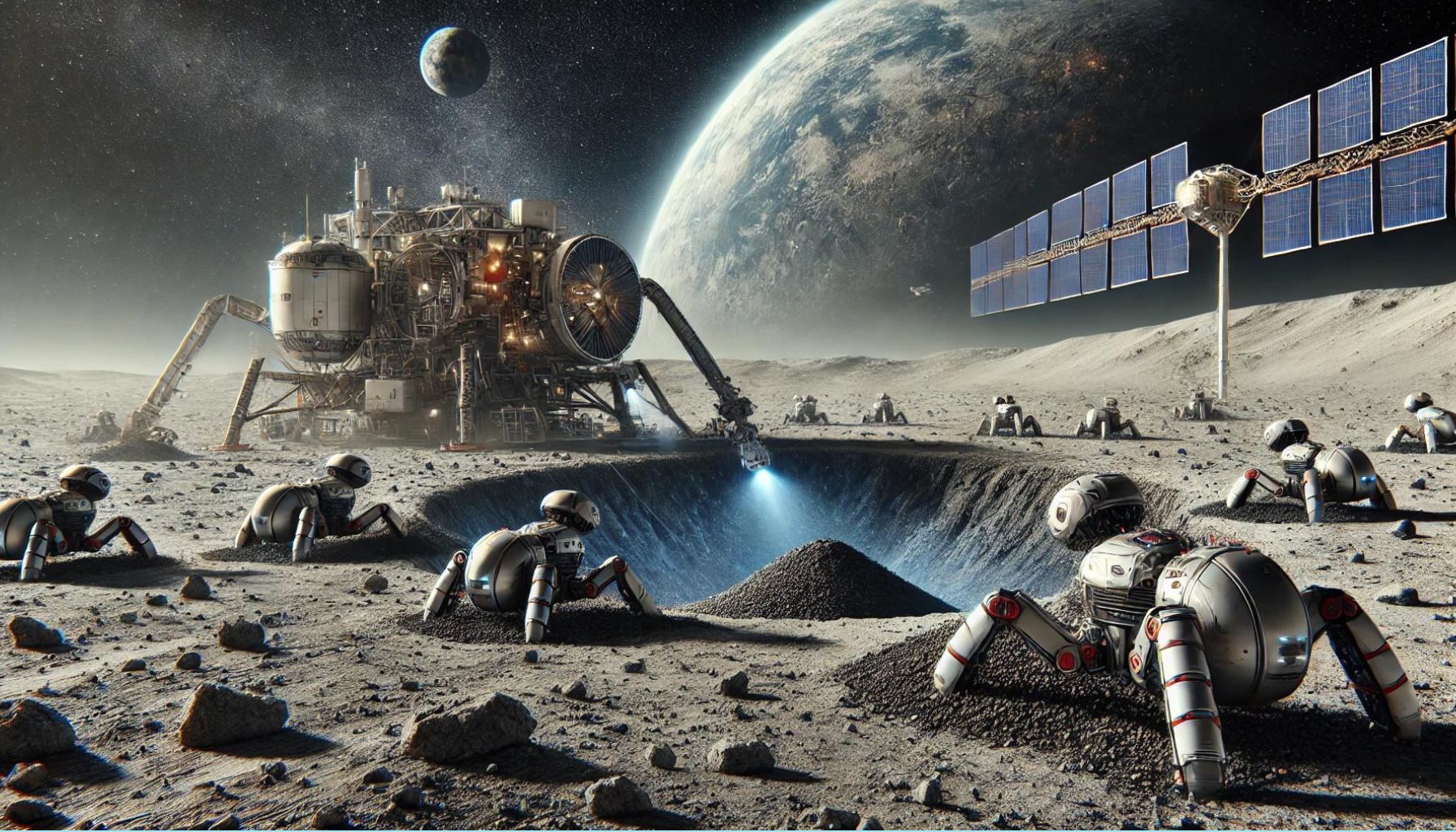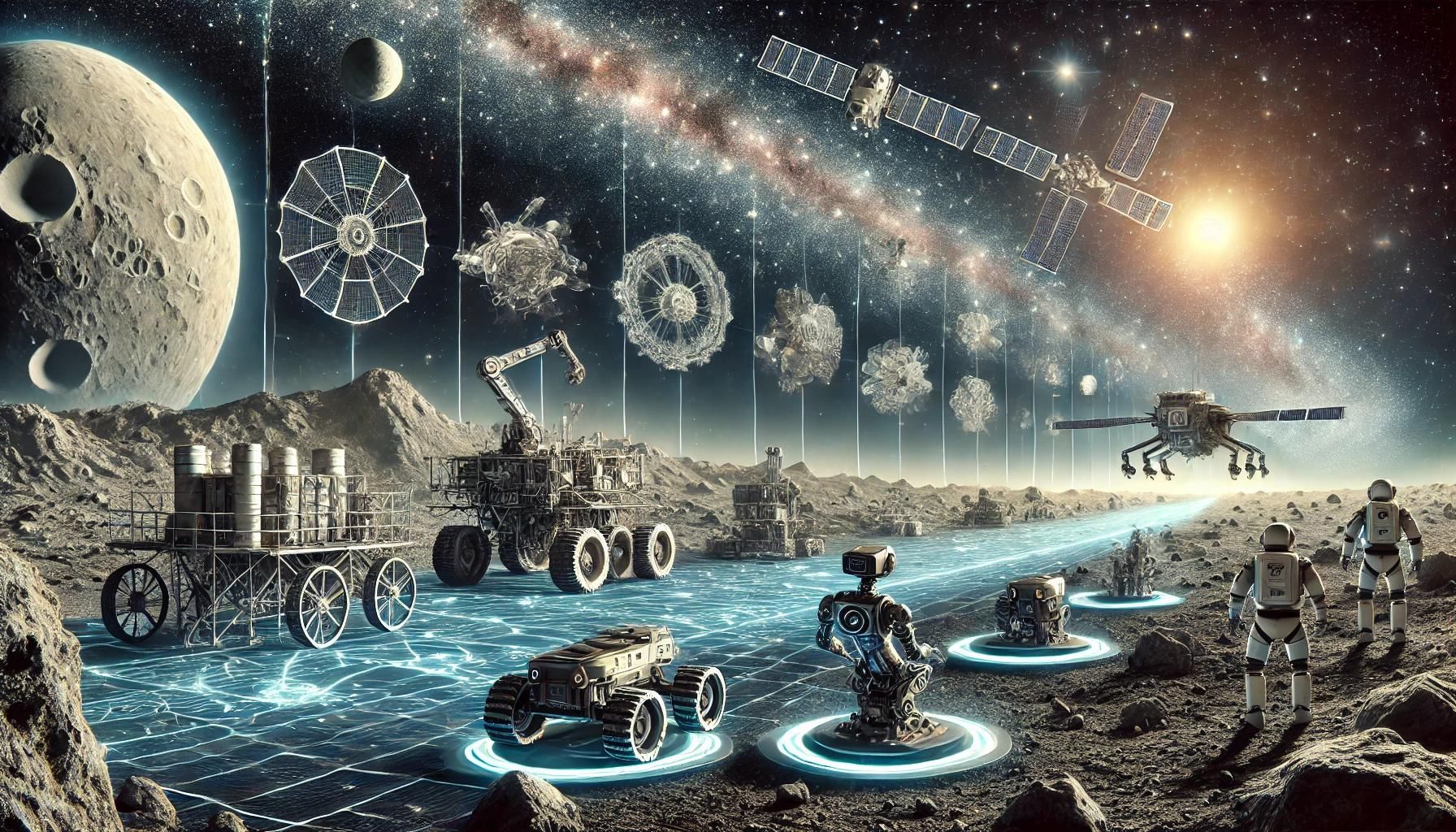The New Space Race: Moon Mining
Unlocking the Moon's Hidden Treasures

Half century ago, the geopolitical tension between the United States and Russia catalyzed a fierce competition to land on the Moon first. Today, a new race has emerged, driven not by political rivalry but by the economic potential of lunar mining. With the Moon harboring a wealth of resources such as water, rare elements, and metals, both governmental and private space entities are betting on the potential profitability of these lunar assets. These resources could either be used on Earth or support the construction and sustenance of lunar habitats, potentially serving as way stations for missions to nearby asteroids, Mars, and beyond.
The logistics of how companies might undertake such ventures and return high-value materials to Earth remain complex and speculative. Nonetheless, entrepreneurs from both private and public sectors argue that Moon mining could preserve our planet’s resources while creating new opportunities for solar system exploration.
The Riches of the Moon
Water and Ice: The Cornerstone of Lunar Exploration
Water is arguably the most critical resource for sustaining long-term human presence on the Moon, primarily found as ice within the permanently shadowed craters at the lunar poles. This ice, preserved in regions that never see sunlight and remain perpetually cold, holds immense potential for revolutionizing lunar exploration. NASA’s Lunar Reconnaissance Orbiter (LRO), which has been meticulously studying the Moon since 2009, has played a crucial role in identifying and confirming the presence of water ice. The availability of this resource could fundamentally change how we approach lunar missions, enabling not only life support but also the production of rocket fuel, thus supporting extensive space exploration.
Discovery and Confirmation of Lunar Ice
The LRO, equipped with an array of sophisticated instruments, has provided compelling evidence for the presence of water ice. Key instruments and their contributions include:
- Lunar Orbiter Laser Altimeter (LOLA): This instrument measures the elevation of the lunar surface, helping to map regions of permanent shadow where ice is likely to exist. By identifying these cold traps, LOLA has pinpointed areas where ice could be stable over geological timescales.
- Diviner Lunar Radiometer Experiment: By measuring the temperature of the lunar surface and subsurface, Diviner helps locate the coldest areas on the Moon. These regions, which can drop to temperatures as low as -250°F (-157°C), are ideal for preserving ice.
- Lyman Alpha Mapping Project (LAMP): LAMP detects surface frost by measuring the ultraviolet light reflected off the lunar surface. This method allows for the identification of ice deposits even in the darkest regions of the Moon.
- Neutron Detector Experiment: This instrument measures the presence of hydrogen within the lunar regolith, indicating the presence of water. By analyzing the distribution and concentration of hydrogen, scientists can infer the abundance of water ice.
In addition to these instruments, data from other missions, such as the Lunar Crater Observation and Sensing Satellite (LCROSS), which intentionally impacted a permanently shadowed crater, provided direct evidence of water ice by analyzing the plume of material ejected from the collision.
Importance of Lunar Ice
1. Life Support Systems:
Water is fundamental for sustaining human life. On the Moon, water ice can be harvested and converted into liquid water for drinking, hygiene, and food preparation. Beyond its immediate use, water can be electrolyzed to produce oxygen, essential for breathable air within lunar habitats. This capability reduces the need for costly and logistically challenging resupply missions from Earth.
2. Rocket Fuel Production:
One of the most transformative applications of lunar water is its potential use in producing rocket fuel. Through the process of electrolysis, water can be split into hydrogen and oxygen, both critical components of rocket propellant. Hydrogen can be used as fuel, and oxygen as an oxidizer, creating a sustainable supply of rocket fuel directly on the Moon. This capability would enable spacecraft to refuel on the lunar surface, facilitating missions deeper into space, such as to Mars and beyond, without the need to launch fuel from Earth.
3. Support for Lunar Infrastructure:
The availability of water on the Moon also supports the development of lunar infrastructure. Water can be used in various construction processes, such as mixing with regolith to create building materials or producing concrete for habitat construction. Additionally, water’s thermal properties can be utilized for temperature regulation within lunar habitats.
4. Scientific Research and Experimentation:
The presence of water ice offers significant opportunities for scientific research. Studying the ice can provide insights into the Moon’s geological history, the solar system’s formation, and the history of water in the solar system. It also offers a unique environment for testing life support systems, resource utilization technologies, and other critical technologies for future space exploration.
5. Economic and Strategic Value:
Water is not only valuable for its practical uses but also holds significant economic and strategic value. Nations and private companies that develop the capability to extract and utilize lunar water will gain a substantial advantage in space exploration and the emerging space economy. Control over this resource could drive partnerships, competition, and geopolitical dynamics in space exploration.
Future Prospects and Challenges
The prospect of utilizing lunar ice is promising, but it comes with several challenges. The extraction and processing of ice require advanced robotic systems capable of operating in the harsh lunar environment. These systems must be able to locate, mine, and transport ice to processing facilities. Developing such technology requires significant investment in research and development.
Technological Innovations:
- Autonomous Mining Robots: Robots designed to operate autonomously in the challenging lunar environment are crucial. These robots must navigate rugged terrain, extract ice efficiently, and transport it to processing facilities.
- In-Situ Resource Utilization (ISRU): ISRU technologies will be vital for processing ice into water, oxygen, and hydrogen. These technologies must be robust and reliable, capable of functioning continuously in the harsh lunar environment.
- Energy Solutions: Solar power and other energy solutions will be needed to power mining and processing operations. Efficient energy storage systems will ensure operations can continue during the lunar night.
Operational Challenges:
- Extreme Temperatures: The extreme cold of permanently shadowed regions poses significant challenges for machinery and operations. Equipment must be designed to withstand and operate effectively in these conditions.
- Lunar Dust: The abrasive nature of lunar dust can interfere with mechanical operations and pose health risks. Effective dust mitigation strategies are essential.
- Logistics and Transportation: Transporting extracted and processed materials from the Moon to Earth or other locations in space requires reliable and cost-effective transportation solutions.
The presence of water ice on the Moon represents a transformative opportunity for lunar exploration and broader space missions. By leveraging this crucial resource, we can support sustained human presence on the Moon, develop lunar infrastructure, and create a stepping stone for deeper space exploration. The challenges are significant, but the potential benefits – from scientific discovery to economic gain and strategic advantage – make lunar water a cornerstone of future space endeavors. As we continue to innovate and invest in the necessary technologies, the dream of harnessing the Moon’s resources to support humanity’s expansion into the cosmos becomes ever closer to reality.




2 Comments